Australian mule error Half Penny 1916 coin
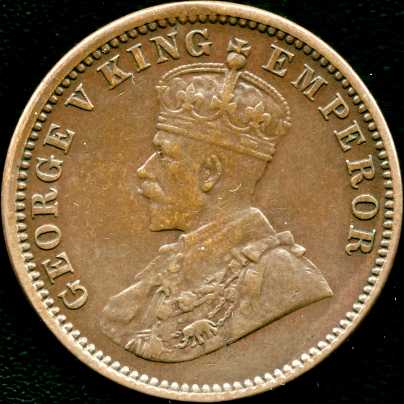
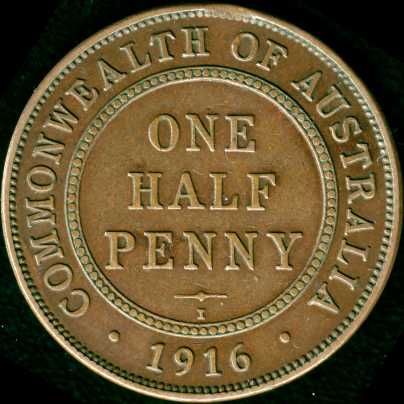
One of the very few known examples
A small number of 1916 halfpennies were struck with the obverse die for an Indian
quarter anna. The existence of these coins was not known until the end of June 1965
when Cecil Poole found one in Adelaide. The discovery was announced in the Adelaide
Advertiser on 14/7/65:
Biggest Find in Coin History
An authority on coins has hailed the Adelaide discovery of an incorrectly minted
1916 halfpenny as the biggest find in the history of Australian coinage.
The halfpenny is minted on the obverse side like an Indian halfpenny of the same
period. It was found by Mr. C. C. Poole of Norma Street, Mile End, while searching
for another coin in his collection. He noticed that the obverse side had an English
language inscription around the edge instead of the usual Latin inscription. The
chain around the King's neck also showed an elephant.
Authentic
Mr D. H. Skinner, author of the Australian Commonwealth Coinage Guide said yesterday
he had no doubt the coin was authentic.
Mr Skinner said the 1916 bronze Australian coins were minted at Calcutta. Obviously,
some Australian halfpennies had been minted with the Indian obverse die.
He said the rare Australian 1930 penny had been discovered soon after it was
minted. "Now we have a coin, minted nearly half a century ago, just being discovered
as a collector's item."
Mr Skinner valued the halfpenny at at least £150.
In the 10th edition (1976) of Renniks
the whole of page 8 is devoted to the the authenticity the mule halfpenny. The tone
of the article is somewhat defensive, suggesting that Skinner must have received
quite a bit of negative feedback as a result of his endorsement. Support for such
a conjecture is lent by the long string of articles and letters appearing in Australian
Coin Review from November 1965 until the issue was finally settled in January 1967
after the coins had been authenticated by the British Museum and Spink & Son.
(Apparently an earlier authentication June 1966 by the Royal Australian Mint did
not satisfy numismatists.)
It is not clear whether the striking of these coins was deliberate or accidental.
According to Myatt and Hanley,
about 250 of these coins were struck of which 60 or so were given away and the rest
were included with the production mintage. If this assertion is correct then the
mixing of dies may well have been deliberate but the authors do not give the source
of their information. Furthermore, no specimen has turned up in India or England,
so casting doubt on the authors' claim. All coins known have been pulled from circulation.
If the Myatt & Hanley assertion is true then there would have been 190 mules
in amongst 3.6 million coins which translates to one in every 19,000. Given that
the number of 1916 halfpennies still in existence is probably well below 100,000
and that the mule is not particularly noticeable then the chance that another will
surface is quite low.
At least five of these extraordinary coins are known to exist, and the number
may be as high as seven. As mentioned, the first publicized discovery was that of
Cecil Poole. The second which came to light as a result of the press article was
owned by Darcy Koschade of Fullarton, Victoria and was subsequently bought by Dion
Skinner. In the November 1965 issue of ACR, Skinner revealed that Mr Koschade had
inherited the coin upon the death of his brother, Robert, in January 1947. The recollection
of the Koschade family was that Robert had found the coin in the period 1930 to
1933 and had regarded it as his prize possession.
The first four coins discovered were:
-
8/7/65: Cecil Poole, West Richmond, SA announced his discovery at a meeting of the
Numismatic Society.
-
15/7/65: Darcy Koschade, Fullarton VIC showed his coin to Ian Muddle, coin auctioneer
and dealer. Coin was subsequently offered at public auction on 27/7/65 and purchased
by Dion Skinner for £80.
-
25/7/65: C. H. Grause, Fitzroy, VIC.
- Oct 1965: Adelaide Advertiser reported a coin discovered by Marie Calderwood. (Ref: ACR, Nov '65, Editorial)
One of the first two coins was advertised by Skinner in the March 1967 issue of
Australian Coin Review for sale by tender and eventually fetched $1300. If the picture
in the June issue accompanying the notice of sale is to be believed then it was
the Poole coin which was sold but it is possible the magazine just used an earlier
block without regard for the actual coin. Another specimen was advertised by E.
P. Rose of Sydney in the October 1967 issue of the same magazine but no provenance
was given. From the low-resolution picture it seems unlikely that it was either
the Poole or the Koschade coin.
What status should be given to these coins? Should they be regarded as mainstream
circulation issue or dismissed as errors? My inclination is to accept them as mainstream.
In forming that opinion, I noted that these coins were produced in an official branch
of the Royal Mint, were struck under contract from the Australian government, were
released as part of the normal circulation issue, and did indeed circulate in Australia
for very many years.
Indian 1/4 anna coin
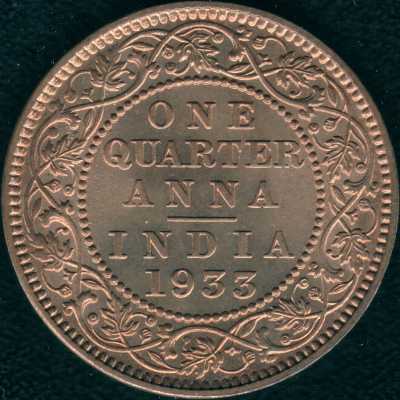
Reverse of a 1933 quarter anna.
The quarter anna coin is similar in size to the Australian halfpenny and the obverses look quite similar but there are several differences. The quarter anna coin has:
- a much simpler legend,
- a small elephant near the bottom of the bust
- no "pearls" in the band of the crown
Furthermore, the planchet for the quarter anna was somewhat thinner than that for
the halfpenny. A halfpenny weighs around 5.6g whereas the quarter anna registers
only 4.9g.
The pictures below show the differences.
Quarter anna and halfpenny compared
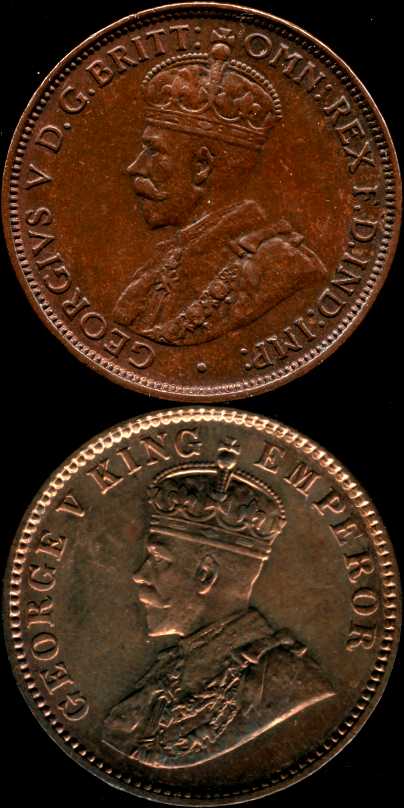
Full coin views of obverses of an Australian halfpenny and of a quarter anna.
Note that the quarter anna obverse illustrated here is from a coin dated 1933 and is slightly different from the 1916 obverse.
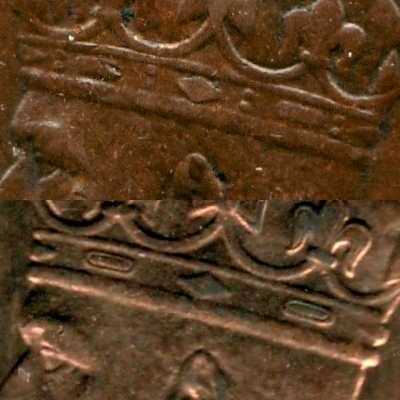
Crown headbands on the halfpenny (top) and the quarter anna. Note that "pearls"
are present on the halfpenny but not on the quarter anna.
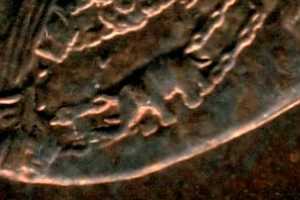
Elephant lurking in the regalia
Other Australian coins errors

